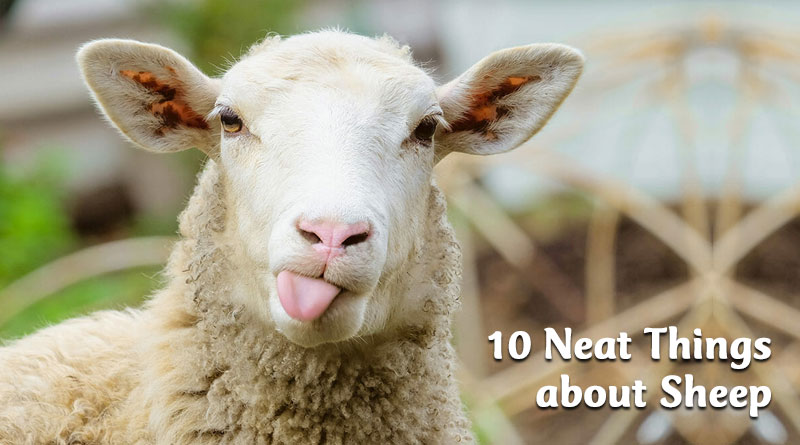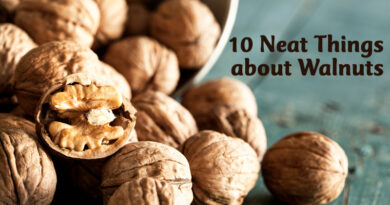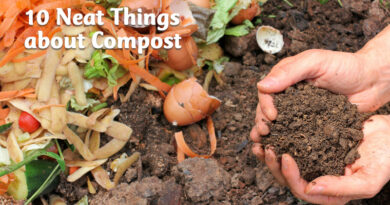About Sheep
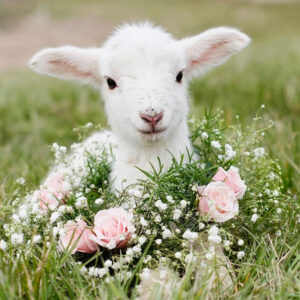
1. What kind?
Sheep are specifically referred to by age. Young ‘uns are, of course, lambs, and adults are ewes if they’re females or rams if they’re males. But have you heard of wethers, which are castrated males? Or have you ever heard of a ram referred to as a tup? It’s an old English term.
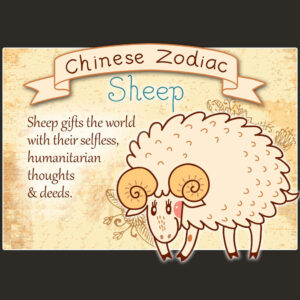
2. Herding.
Because they’re docile—or at least, they won’t defend their territory—sheep were probably the second animal to be domesticated, after dogs. They were farmed by ancient Greeks. Aries the sheep is the first sign of the Greek zodiac. The sheep is also one of the 12 animal signs for the Chinese zodiac. They have a long history of importance to humans.

4. Wool II.
Domesticated sheep raised for wool produce a lot of it. One sheep can give between 2 and 30 pounds per year. One pound of wool can be spun into up to 10 miles of yarn! That’s the kind of yarn used for weaving suits, though, not the kind your granny knits. For reference, it takes about a pound of wool to knit a sweater.

5. Wool III.
All that wool makes a sheep hot. Their regular body temperature is 102.5 Fahrenheit.

6. Seeing.
Sheep without wool on their faces have excellent peripheral vision. They have horizontally slit-shaped irises, allowing them to see up to 320 degrees. Humans max out at 220 degrees. Some breeds are “wool blind” though, which means there is enough wool on their faces to affect or obliterate their vision. So, if you sneak up on a sheep, chose one with a woolly face.
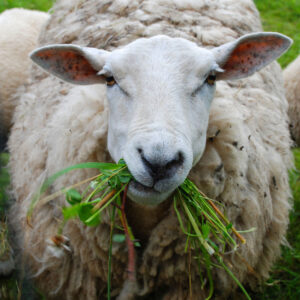
7. Taste.
They show preference for some tastes over others. Sweet and sour plants are enjoyed but they will often turn their noses up at bitter plants.

8. Number.
There are over one billion sheep in the world, most of them in China. If you’ve never thought about lamb in Chinese food, that’s because you’ve been eating in Canada. Per capita consumption of lamb and mutton in China is 3.1 kilograms per year, which isn’t super high—they consume over 50 kilos of pork; in the US, sheep and lamb consumption is less than half a kilo per person per year.

9. Teeth.
A mature sheep has 32 teeth, like humans. They also have 8 incisors, or front teeth, like humans, but for a sheep they’re all on the bottom. The incisors cut against the top gums. If you look at their jaws, after these 8 bottom teeth, there are no teeth for an inch or two, then there are molars. This space without teeth is called the diastema, and it’s common in herbivorous animals. It allows them to move the grass around with their tongues while chewing.

10. Horns.
Do sheep have horns? It depends on the breed. Ewes don’t have horns very often, rams sometimes do and some sheep of certain breeds have more than two horns—four or even six.
– Shauna Dobbie Copyright©
Pegasus Publications Inc.

